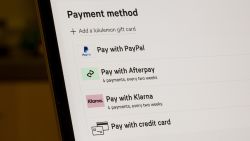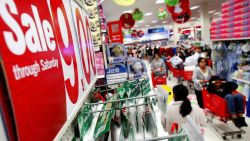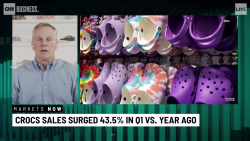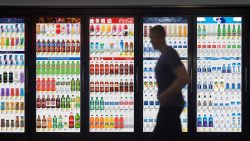The outbreak of coronavirus is pushing Americans to buy their groceries online, a development that could have a lasting effect on the supermarket industry.
While shopping for books and electronics online and ordering dinner through delivery apps have become staples of American life, most customers still prefer to purchase their meat and vegetables at the store. Last year, just 4% of grocery sales in the United States came online, according to Nielsen.
However, with shoppers stuck in their homes in the wake of the virus, online grocery shopping is exploding. Downloads of Instacart, Walmart’s grocery app and Shipt increased 218%, 160%, and 124% respectively last Sunday compared with a year prior.
“We are seeing a larger percentage of customers over the age of 60 that are coming online,” said JJ Fleeman, chief e-commerce officer for Ahold Delhaize in the United States, which owns brands like Stop & Shop, Food Lion and the online delivery service Peapod. “We’re seeing a lot of new customers coming into the channel.”
A third of consumers said Sunday that they had purchased groceries for online pickup or delivery in the past seven days, according to a survey by analysts at Gordon Haskett Research Advisors. Around 41% said they were buying groceries online for the first time.
“Consumer behaviors always shift in times of disaster,” said Doug Baker, vice president of industry relations at FMI, a trade group for food retailers. “People are learning new skills and how to shop online as a result of what we’re experiencing today.”
Maria Alvarado in Phoenix usually shops in person for groceries at Walmart or Safeway, but she tried ordering online last week for the first time through Walmart’s in-store pickup option. She plans to keep using the service.
“Once things go back to normal, I will probably use online again,” she said. “It was really easy.”
Big grocers like Walmart, Albertsons, Stop & Shop, Meijer, Hy-Vee and others have been experimenting with new ways to fulfill online orders in recent years. They have increasingly looked to technology to reduce costs and keep aisles from jamming up with shoppers and workers picking customers’ orders.
Grocers have been building automated mini-warehouses inside their stores and opening up “dark stores” — locations that look like supermarkets but are closed to customers — to make deliveries and prepare pickup orders.
Yet the crush of demand in the wake of coronavirus has overwhelmed grocers’ delivery and pickup networks, causing long waits, cancellations and outages in some parts of the country.
“The surge in online grocery orders is causing operational difficulties,” said Bill Bishop, CEO of grocery consulting firm Brick Meets Click.
Grocers are scrambling to adjust and hiring workers to keep up.
Fleeman from Ahold Delhaize said the company was adding “web servers to help us process the increased demand” and offering more windows for customers to pickup their orders or get delivery.
This shift online during the crisis may reshape the supermarket industry by helping large grocers consolidate their grip, experts predict.
“We see this unfortunate period accelerating structural changes in consumer shopping,” possibly by five years, said Seth Sigman, analyst at Credit Suisse, wrote in a report. “This is driving significant growth in new customers” to Walmart (WMT).
Consumers adopting online grocery shopping may add to the pressure small and mid-sized grocers already face, analysts say. These smaller chains don’t have as much capital to invest in building out their delivery infrastructure. And delivery is less profitable for grocers than traditional purchases in stores.
Coronavirus “may hasten the adoption” of online delivery and pickup, touching off long-term challenges for smaller chains earlier than expected, Kelly Bania, analyst for BMO Capital Markets, said in a research report this week.


























